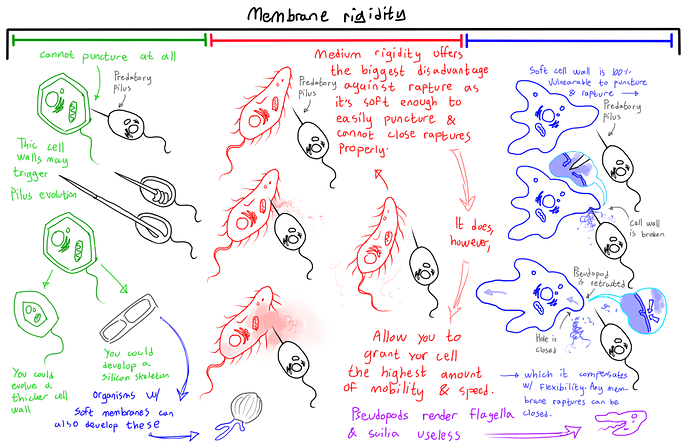I‘m not sure if this kind of reposting is appreciated, but I just found some great concept art of this in another thread (Prokaryote Gameplay)
I thought it might be helpful to put this here. What‘s the point of good concept art if it‘s not visible where people discuss the exact things that concept art explains?
Sadly I don‘t know who created this.
I think this general idea, coupled with a slider, provides the best option. It‘s still a two way slider, but the balancing is more interesting than a simple defence vs speed slider. This way it‘s more defence vs speed vs engulfing.
As you can see in the table above, this could be quiet balanced if we do it correctly.

